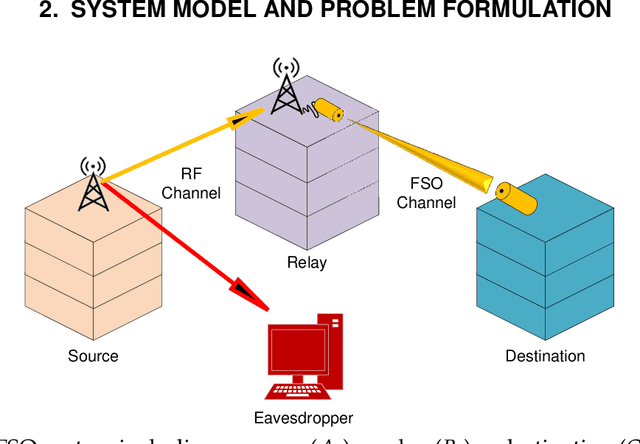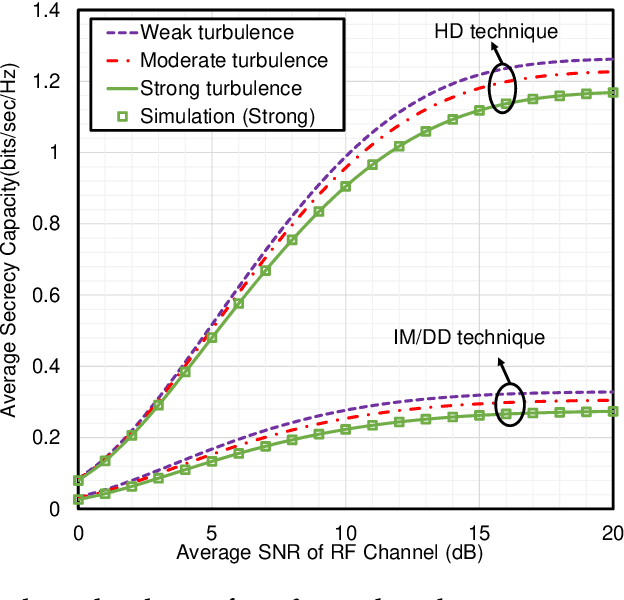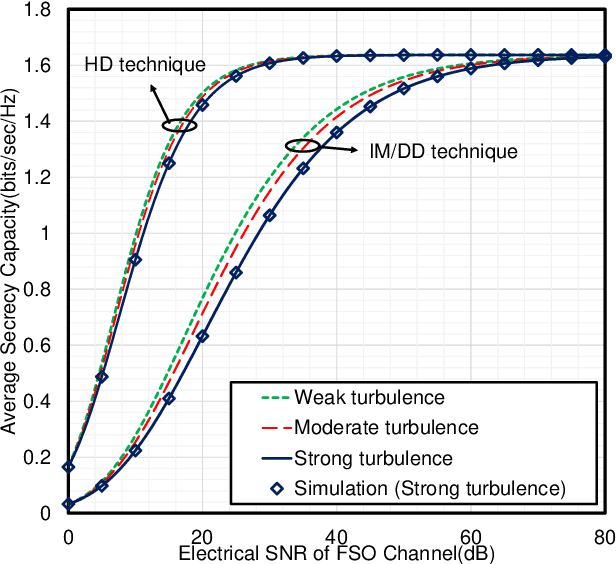On Secrecy Performance of Mixed α-η-μ and Malaga RF-FSO Variable Gain Relaying Channel
Paper and Code
May 26, 2021



With the completion of standardization of fifth-generation (5G) networks, the researchers have begun visioning sixth-generation (6G) networks that are predicted to be human-centric. Hence, similar to 5G networks, besides high data rate, providing secrecy and privacy will be the center of attention by the wireless research community. To support the visions beyond 5G (B5G) and 6G, in this paper we propose a secure radio frequency (RF)-free-space optical (FSO) mixed framework under the attempt of wiretapping by an eavesdropper at the RF hop. We assume the RF links undergo alpha-eta-mu fading whereas the FSO link exhibits a unified Malaga turbulence model with pointing error. The secrecy performance is evaluated by deducing expressions for three secrecy metrics i.e. average secrecy capacity, secure outage probability, and probability of non-zero secrecy capacity in terms of univariate and bivariate Meijer's G and Fox's H functions. We further capitalize on these expressions to demonstrate the impacts of fading, atmospheric turbulence, and pointing errors and show a comparison between two detection techniques (i.e. heterodyne detection (HD) and intensity modulation with direct detection (IM/DD)) that clearly reveals better secrecy can be achieved with HD technique relative to the IM/DD method. The inclusion of generalized fading models at the RF and FSO hops offers unification of several classical scenarios as special cases thereby exhibiting a more generic nature relative to the existing literature. Finally, all the analytical results are corroborated via Monte-Carlo simulations.
 Add to Chrome
Add to Chrome Add to Firefox
Add to Firefox Add to Edge
Add to Edge